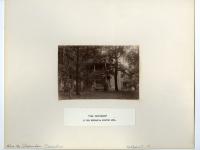Answer: The manufacture of silk.
In 1725, Pennsylvania statesman James Logan, reportedly wrote to the Penn family explaining that the "the culture of silk in [the Colonies] is extremely beneficial and encouraging." Several decades later, the local silk industry, which had been growing slowly over time and promoted by the likes of Benjamin Franklin, received a boost when, at Arch and High streets, a house opened for the winding of silk. The majority of the silk cocoons came from local growers, including those in New Jersey and Lancaster.
In the early 1800s, raising silk worms locally took off as a profession, and many people joined the craze, including noted Philadelphia physician Philip Syng Physick. In 1840, he built what would become called "The Cocoonery" in the city's Germantown neighborhood. There he kept silkworms and raised mulberry trees, which were used for food for the worms. At some point, the high cost of the venture caused Physick to get out of the silkworm business, and The Cocoonery was sold in the 1860s to the Eastburn family, who turned it into a boarding house.
HSP has numerous resources, published and unpublished, on the history of the silk industry in Philadelphia and Pennsylvania. Manuscript sources include the G. B. Mutier notebook (Am. 10685), Mrs. Howard W. Lewis collection of early Philadelphia businesses papers (#367), the Peter Stephen Du Ponceau papers (#181), and the Tea and Silk Merchandise books (Amb .559).

